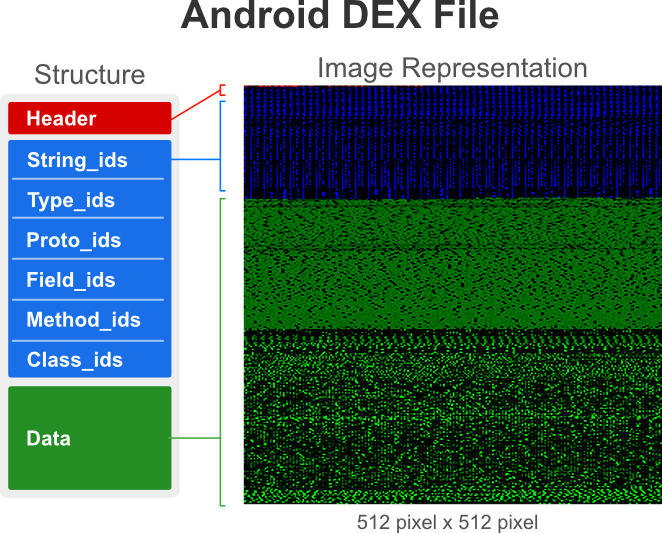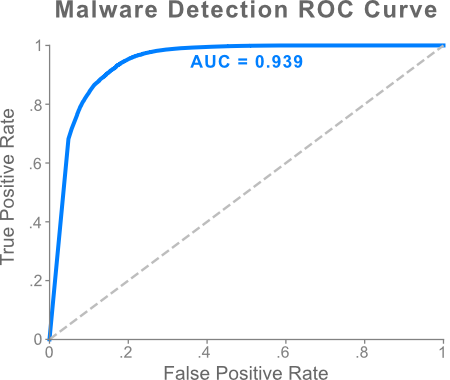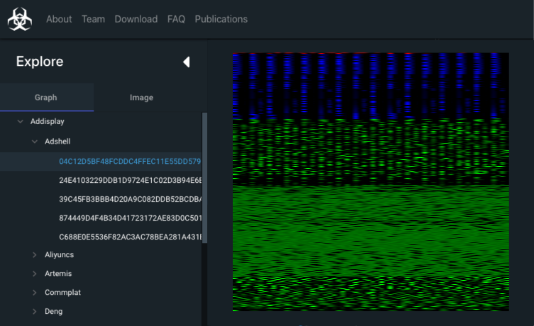Computer vision is playing an increasingly important role in automated malware detection with to the rise of the image-based binary representation. These binary images are fast to generate, require no feature engineering, and are resilient to popular obfuscation methods. Unfortunately, malware image databases have been restricted to small-scale or private datasets that only a few industry labs have access to.
To solve these issues, we have been working to develop the worlds largest public binary image database to date at Georgia Tech’s Polo Club of Data Science. We release MalNet, which contains over 1.2 binary images across a hierarchy of 47 types and 696 families of classes. Compared to the popular Malimg database, MalNet offers 133x more images, and 27x more classes.
Binary images represent the bytecode of an executable as a 2D image (see figure below), and can be statically extracted from many types of software (e.g., EXE, PE, APK). We use the Android ecosystem due to its large market share, easy accessibility, and diversity of malicious software. With the generous permission of the AndroZoo we collected 1,262,024 Android APK files, specifically selecting APKs containing both a family and type label obtained from the Euphony classification structure.
Great question! The scale and diversity of the MalNet database offers researchers and practioners the ability to conduct industry-scale experiments on malware detection and classification using binary images. In addition, MalNet offers researchers a chance to:
- study imbalanced classification on a large-scale cybersecurity database with a natural imbalance ratio of 16,901x,
- explore explainability research in a high impact domain, where it is critical that security analysts can interpret and trust the model,
- and investigate zero-shot learning techniques in a constantly evolving landscape, where detecting and categorizing new variants of malware can be a measure of national security.
We have designed and developed MalNet Explorer, an interactive visualization tool to help users explore the data before downloading. Figure 3 shows MalNet Explorer’s desktop web interface and its main components. MalNet Explorer and the data is available online at: www.mal-net.org.
We also release MalNet Tiny, a small-scale version of MalNet to help users rapidly prototype new ideas in a fraction of the time. MalNet Tiny can be downloaded from the MalNet website.
-
The code was tested in Python 3.6. All of the dependencies can be loaded using the enviornment.yml file.
-
Pre-processing functions to parse the train/val/test split information from the MalNet website, along with functions to load the data into Keras are in preprocess.py.
-
The experiments from the arXiv paper can be run using main.py.


